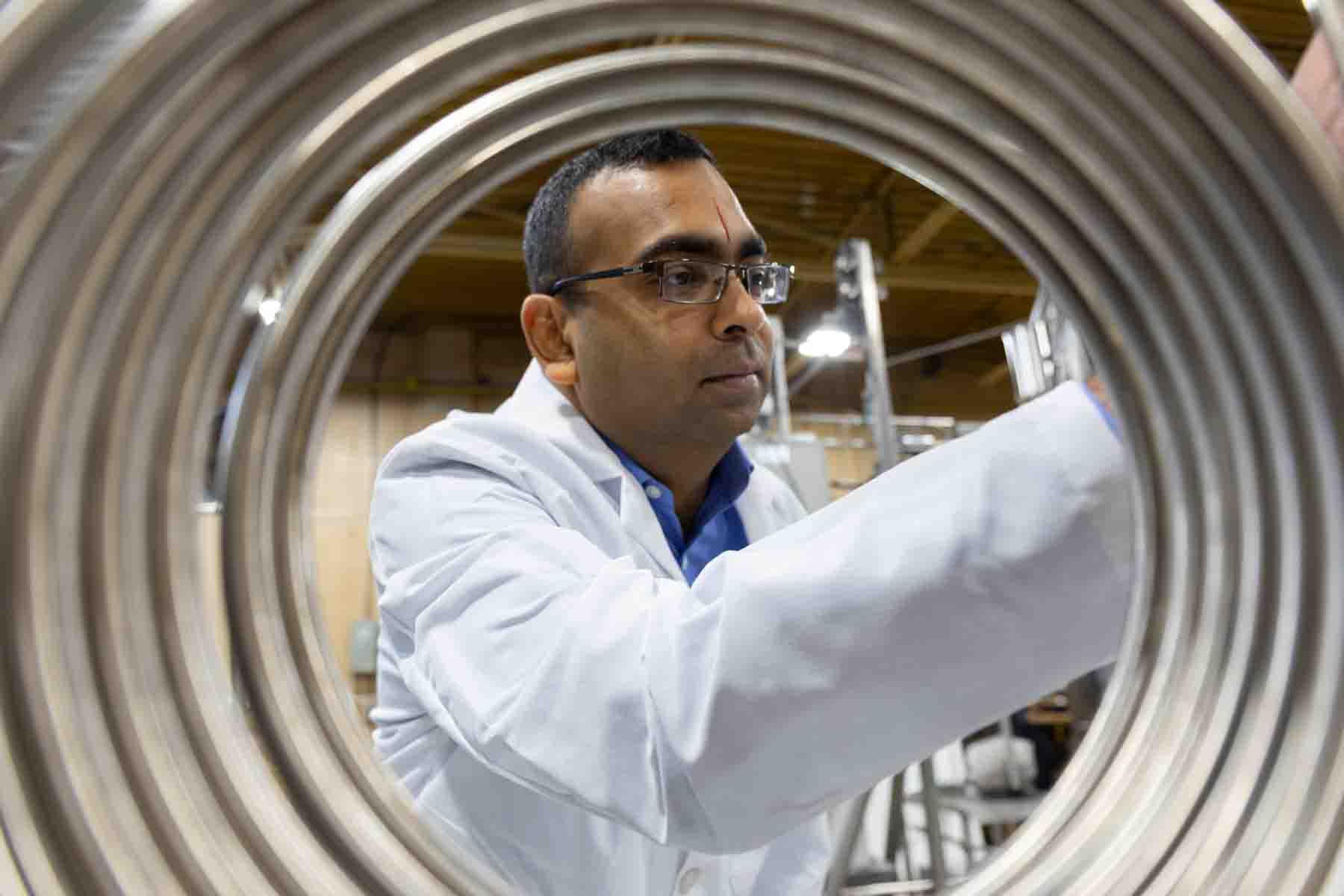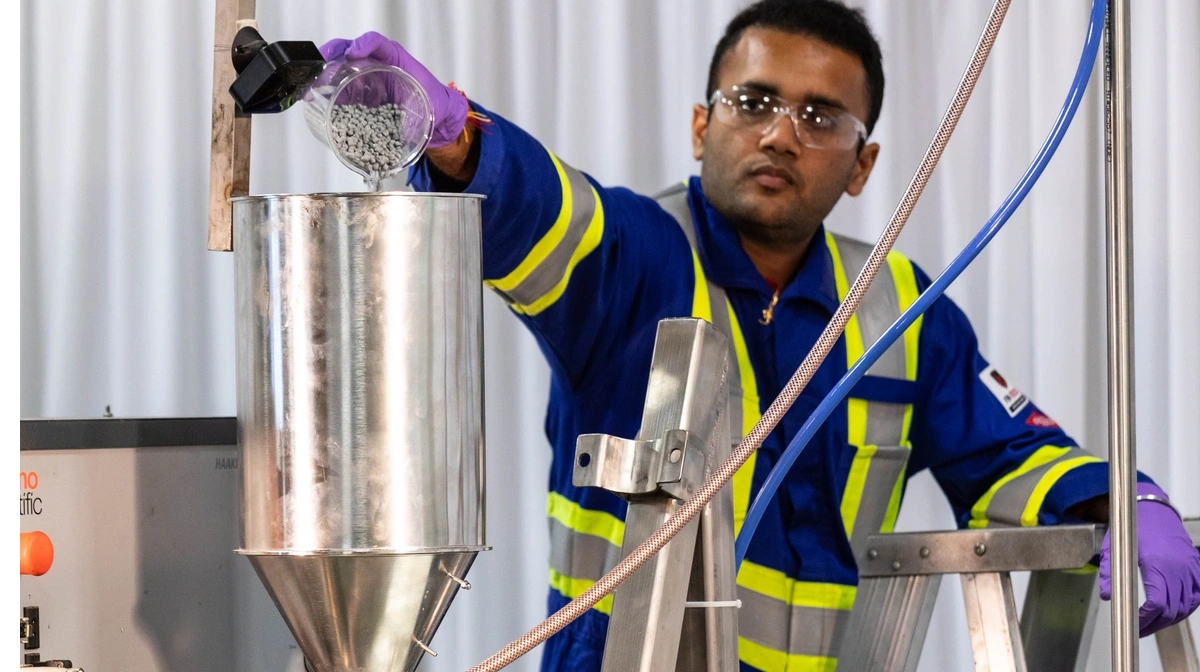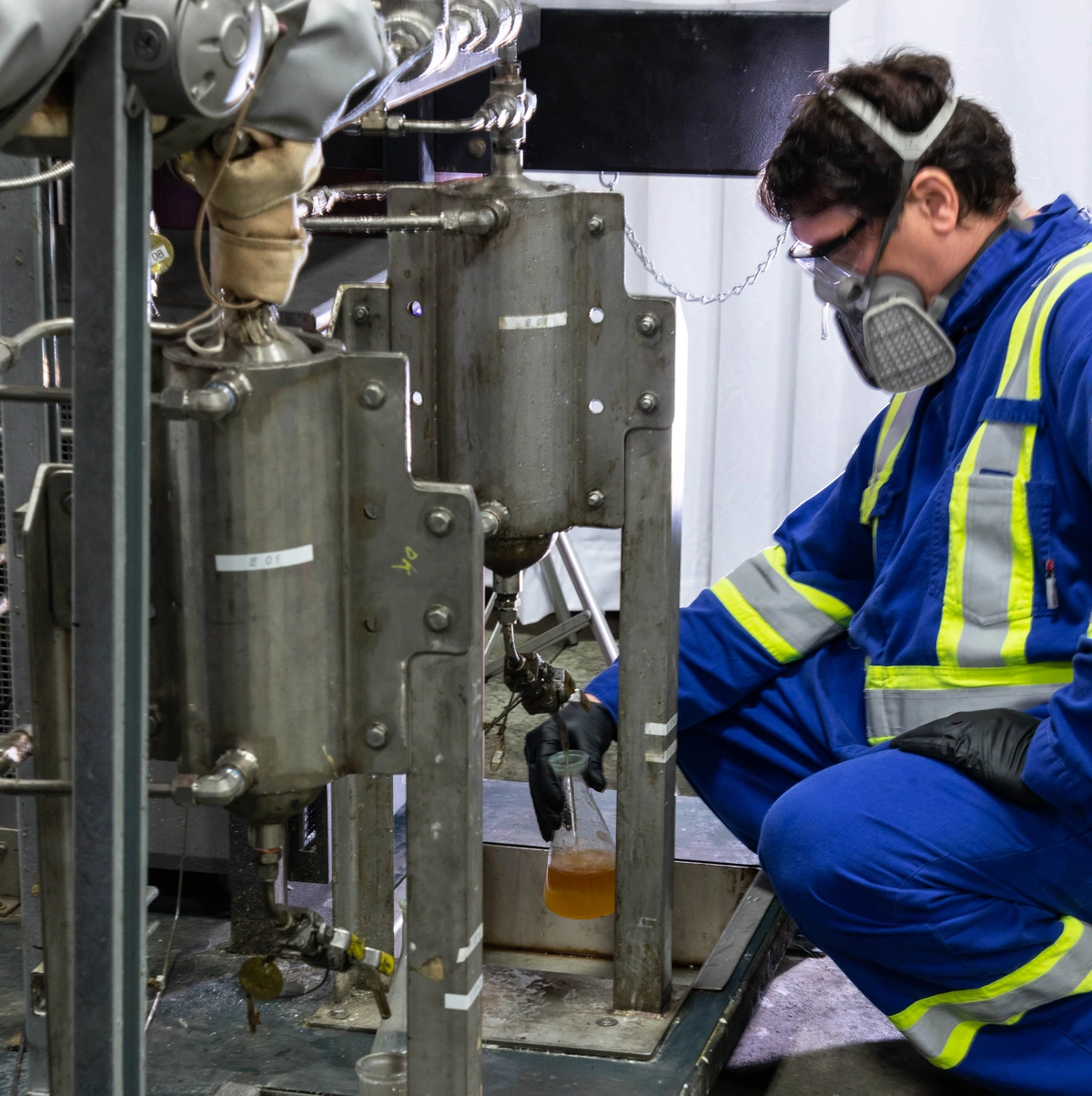Hydrochemolytic™
is an Aduro chemical technology that works with water to deconstruct robust molecules in plastics and heavy oil to smaller ones with better properties.

is an Aduro chemical technology that works with water to deconstruct robust molecules in plastics and heavy oil to smaller ones with better properties.
We build our solutions on a platform of innovative chemical technologies. The one that powers our capability to upgrade bitumen and upcycle plastics is Hydrochemolytic Technology, HCT. It is a unique, patented way to chemically persuade big, stubborn molecules in bitumen and plastics to undergo transformation into smaller ones, which are more cooperative as feedstocks for fuels and chemicals.

works with water to make big, stubborn molecules smaller and more useful.
Some technologies do this by force, applying heat as a hammer that breaks the molecules apart, a technique known as cracking. Compounding the drawback of high energy is the complex mixture of molecular pieces caused by uncontrolled breakage.
HCT is different. Simple, inexpensive metal compounds combined with the feedstock work like scissors applied selectively to cut bonds between carbon atoms. And at the lower temperatures used, heat is like a hand that holds and operates the scissors. This beneficially reduces energy costs and carbon emissions while improving product yields. And the controlled deconstruction of large molecules – polymers in plastics and asphaltenes in bitumen – permits better control of product quality.






But having solved one problem, we face another. A fact in chemistry is that when the bond between two carbon atoms is broken, each becomes highly reactive and seeks to make new bonds. Whether caused by a hammer blow or cutting with scissors, this is a big problem. Those reactive carbons need to be quenched (stabilized). Conventional petroleum processing does this using specially designed catalysts to add hydrogen gas (H2). But besides its cost and complexity, this approach emits carbon from fossil fuels consumed to generate the H2 by a process called reforming. A distinctive feature of our HCT is stabilization achieved by adding a renewable H-source to the process. Materials like methanol, ethanol, glycerol, and even cellulose undergo reactions to give a result as if hydrogen were added – yet without the expensive catalyst, complicated process, and consumption of fossil fuels.
Unique technologies from visionary scientists. This pairing of catalytic deconstruction of large molecules with stabilization by a renewable Hsource is unique. And it’s patented. It makes HCT efficient, cost-effective, and environmentally advantaged while generating useful products whose yields and quality are also advantaged compared with alternative, established approaches.
But HCT is only one technology. It’s just the beginning. With breadth and depth of knowledge energized by imagination and passion for the betterment of the planet and its people, Aduro scientist-engineers actively ideate to create new technologies.
